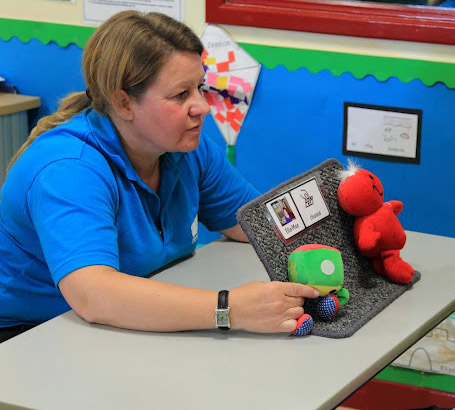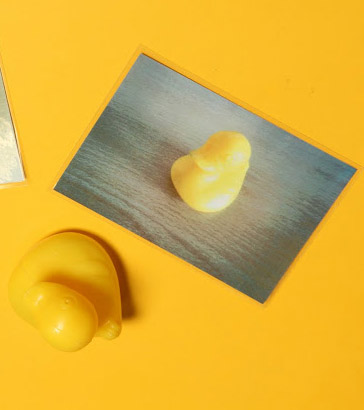Objects can be used as a focus for conversation. For example, you might:
- Stimulate interest, eg by putting the object behind your back, on your head;
- Show them what else the object might do;
- Use an object with component parts that you can hand to the child one by one;
- Take turns with objects such as balls or bean bags;
- Offer objects that require your help to make them work;
- Use toys/gadgets that surprise;
- Develop a familiar play routine using an object – pause and wait for an anticipatory response, and comment on what's happening using short phrases;
- Store a familiar item slightly out of reach and encourage the child to point or use symbols to request it to play with.

Harris and Wimpory (1991) use the acronym PEEP as a checklist for using objects with children with complex needs:
- Props – use objects to support giving the appropriate, succinct spoken key words.
- Expression – use your face, tone of voice and gestures to convey meaning – surprise, pleasure.
- Experience – build on the child's spontaneous reactions.
- Place – ensure the context offers a meaningful experience.

Objects can be used to help children at a pre-intentional level of communication to explore and make sense of their environment. For example:
- Referential objects can be used as a cue to indicate that an activity is in progress or for a child to choose a snack; or
- An object can be used to indicate that something is going to happen, eg a riding hat can be given to a child to hold to indicate that they are going horse riding.
Earlier in this module you saw Keith using a cricket ball as a cue to tell Edward that it was time to go outside. Now watch this video clip in which Keith uses objects to help Edward make choices at snack time.
Watch the English lesson again but, this time, focus on the way the teacher uses objects to support meaning and to include all the children in the class.

What are the strengths?
Are there areas that could be improved?
Make an action plan and discuss with colleagues how it might be implemented.
Evaluate the changes you make in terms of improvements in opportunities for communication.

